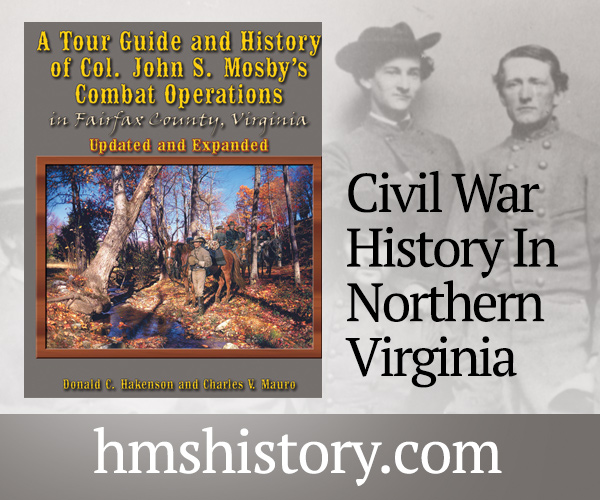Looking back through the four issues published in 2020, I am struck by the variety and quality of the images. They reflect the enthusiasm and energy of you, the collecting community and caretakers of these artifacts. Each one is noteworthy for its content, the identity of the subject, or the story behind it. I find it an impossible task to select a single image as the best we published. There are, however, some that I find especially compelling for one reason or another. Here they are, my top 10 picks of the images I found to be most intriguing, and why. The images are ordered by issue date.
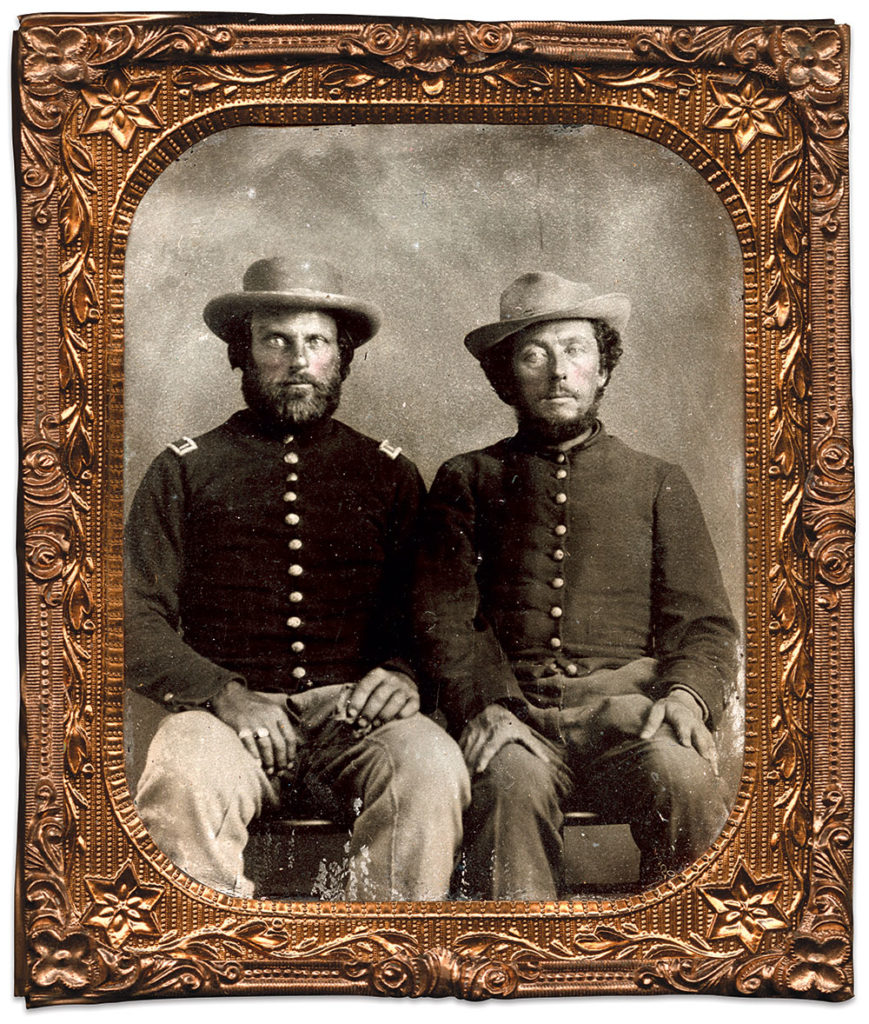
Brothers at Arms
Gary Waddey Collection
Winter 2020
Summary: Tennessee’s Edward and Gabriel Fowlkes grew up together in Hickman County. Then the war came, and they went separate ways—one into the Union army and the other into the Confederate army. Their story is representative of how the war tore families apart. See the full story.
Why I selected this photo: An image of two brothers, North and South, pictured together in the uniforms of their respective armies is among the rarest subjects of Civil War portrait photography.

Ock Tyner Leaves His Mark
Paul Russinoff Collection
Winter 2020
Summary: Oscar Newton Tyner, known as “Ock” to his pals, worked as a photographer’s assistant in the gallery of Barr & Young of Vicksburg. One of the images Tyner printed and signed was Jesse Root Grant, father of Lt. Gen. Ulysses S. Grant. Turns out the photo was taken at a low point during the general’s military career. See the full story.
Why I selected this photo: The photographers and assistants who labored behind the camera to create the images we hold dear are all too often relegated to the shadows. Here, we are able to glimpse one of them with his soldier brother.

A Daguerreian Pioneer at the Rendezvous of Distribution
Ross J. Kelbaugh Collection
Spring 2020
Summary: In his inaugural column, Adam Ochs Fleischer examines the distinctive painted canvas depicting a scene that includes Sibley tents and a palm tree. His investigations highlight the man behind the backdrop, John Jones, and the gallery he operated. See the full story.
Why I selected this photo: My soft spot for seeing portraits of photographers and my fascination with cartes de visite are all wrapped up in this pair of images of Baltimore’s John Jones and his assistant, Henry H. Clark. The poses are wonderful: Jones causally sits on a chair and Clark holds a borrowed sword and rides a toy horse in front of a camp scene.
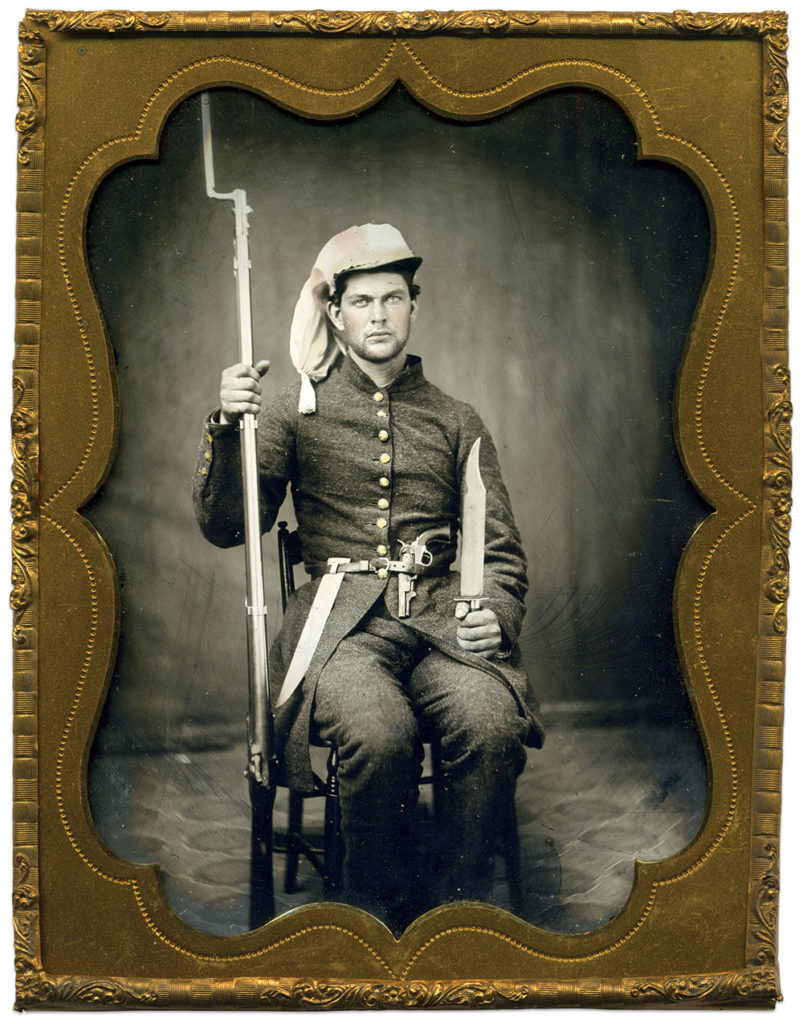
William Houston House, 16th Battalion, Georgia Partisan Rangers
David W. Vaughan Collection
Spring 2020
Summary: In early 1862, William Houston House, a 23-year-old native of Statham, a community outside Athens, Ga., enrolled in the local Jackson County Cavalry. Together with his older brother, James Lawrence House, he and the rest of the company mustered into Confederate service as Company E of the 16th Battalion, Georgia Partisan Rangers. See the full story.
Why I selected this photo: From the first moment I glimpsed this portrait in person at David’s home, I knew it would be on the cover of our spring issue. The photographer captured House, posed with weapons of war and a unique cap, at the outset of a conflict that cost dearly in blood and treasure—far beyond the comprehension of anyone. And, here, House sits, not knowing of the privations he and his family would face. It is an iconic Confederate soldier image.
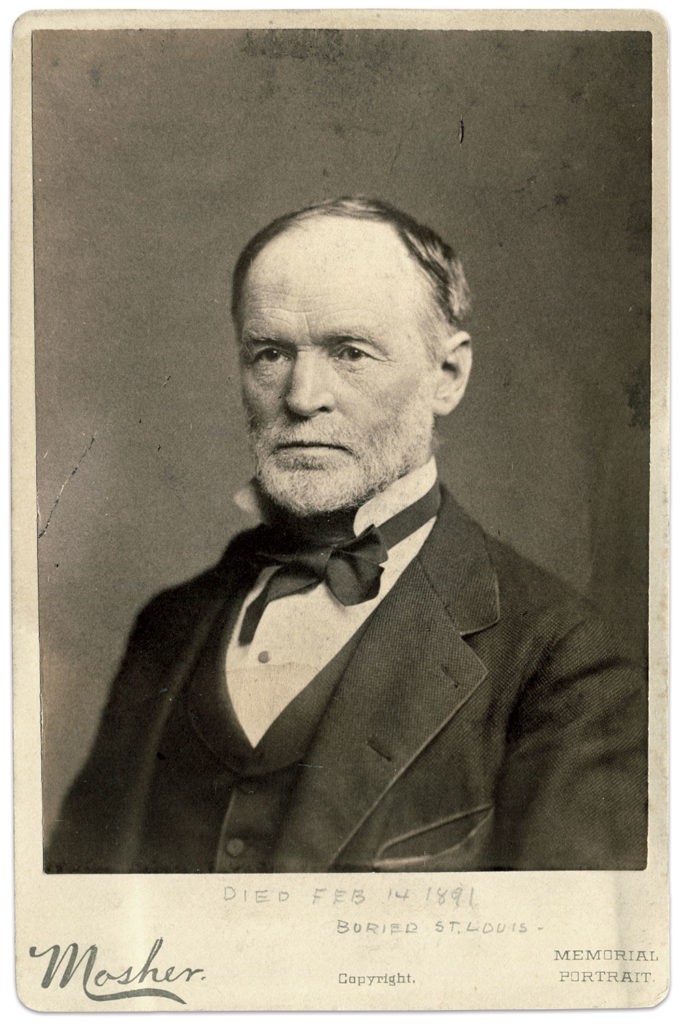
Sherman at 200
Jerry Everts Collection
Spring 2020
Summary: William Tecumseh Sherman is front and center in 25 portraits that document his rise from major general in 1863 to General of the Army to his retirement. See the full story.
Why I selected this photo: Jerry and I had been scanning his collection of images in small batches at various Civil War shows. Choosing the final group from the dozens in Jerry’s collection was a challenge—but this image of Uncle Billy in his golden years really resonated with me. Though in the winter of life, his piercing, commanding gaze is as powerful—perhaps even more so—than the Sherman who marched through Georgia and into the Carolinas.
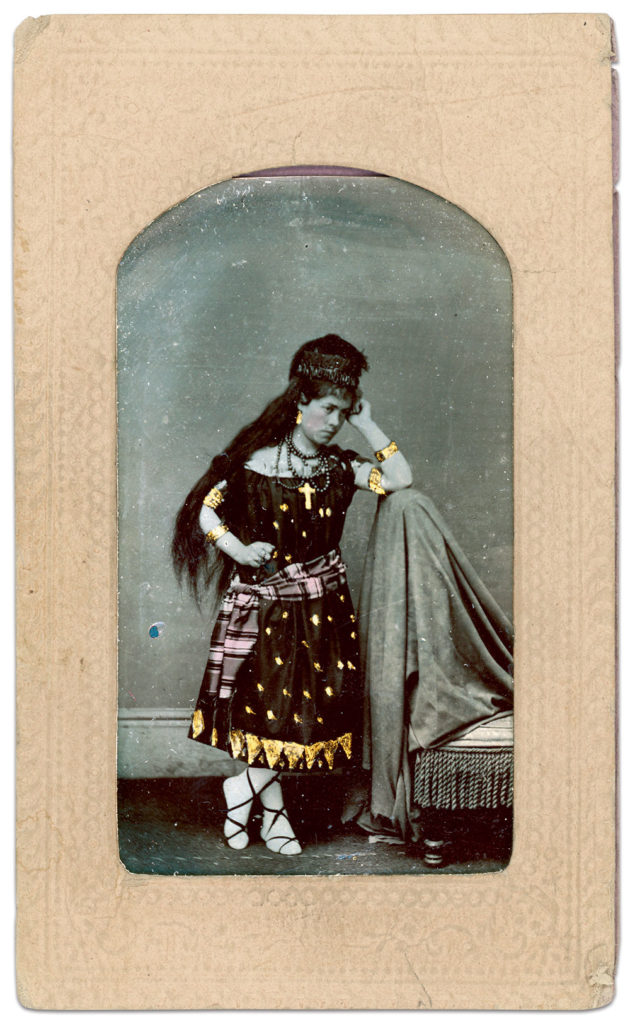
Vinnie Ream’s Commission of a Lifetime
Mahlon Nichols Collection
Summer 2020
Summary: A tintype, believed to be previously unpublished, features Lavinia Ellen “Vinnie” Ream, the sculptor who rose in prominence during the Civil War. Her best known works are of President Abraham Lincoln—an 1864 bust for which he sat, and an 1871 statue that stands in the U.S. Capitol rotunda. See the full story.
Why I selected this photo: This brooding portrait of the artist in costume, cross and sandals suggests to me that Ream has immersed herself in antiquity inspired by her sojourn to Italy, where it is believed she posed for this portrait. The tinting to the photograph adds to the mystique of the young woman who sculpted the most celebrated busts of Lincoln from life.
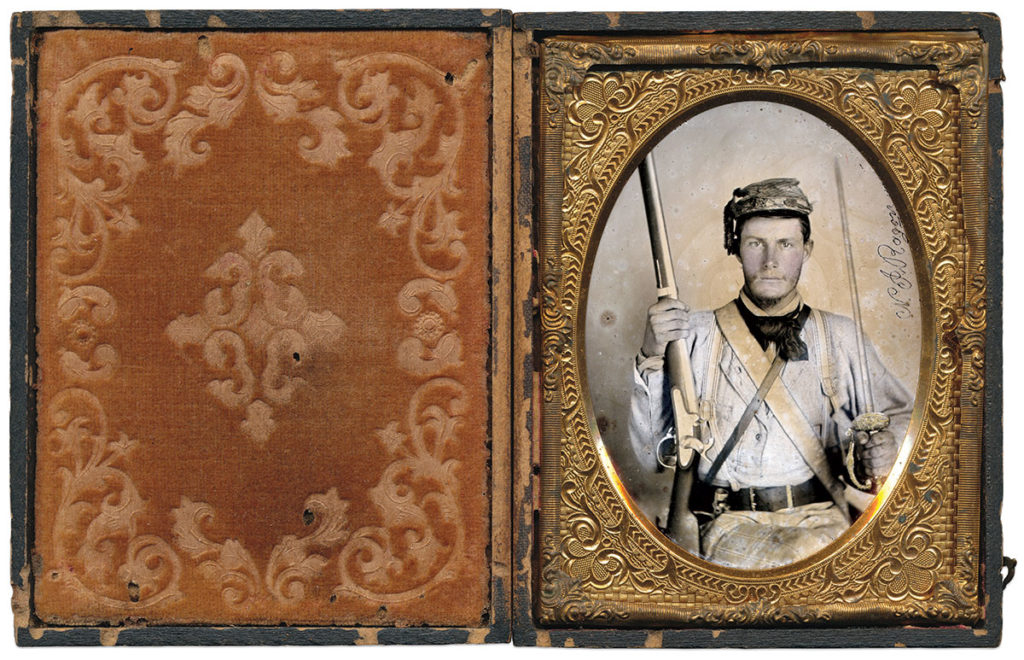
Captured During Barksdale’s Charge
Dan Schwab Collection
Summer 2020
Summary: Newton J. Ragon, a private in the 13th Mississippi Infantry. Fell into enemy hands during the charge at Gettysburg considered by some historians to be the high water of Confederate arms. See the full story.
Why I selected this photo: Another candidate for iconic Southern soldier portrait. His military weapons, unmilitary clothing and fanciful cap personifies the citizen soldier who served the Confederacy.

A Freedman’s Story
Ross J. Kelbaugh Collection
Autumn 2020
Summary: On June 18, 1864, Union Capt. Horace James inscribed the back of a carte de visite of William Headley, who he encountered dressed in tattered clothing. The captain’s words tell the tale of a slave’s escape to freedom. Headley’s fate is not known. See the full story.
Why I selected this photo: The patchwork nature of his clothes is a testament to his condition as an enslaved person, and his upturned face suggests he was a man of grit determined to break the metaphoric and perhaps physical chains that bound him and his family. This is a portrait of struggle in a race war that we continue to fight today.

The “Chaplain of Hood’s Texas Brigade”
Dan Schwab Collection
Autumn 2020
Summary: Chaplain Nicholas A. Davis was an Alabama-born slaveholder who settled in the Lone Star State prior to the war and joined Confederate service as chaplain of the 4th Texas Infantry. His 1863 book, Campaign from Texas to Maryland, with the Battle of Fredericksburg, reveals his allegiance to the South and hatred of Yankees. See the full story.
Why I selected this photo: The content of this portrait, showing Davis in his custom-designed uniform with the Bible and candles, is exceptionally rare. Moreover, this photo, one of three he commissioned, is documented in his book.
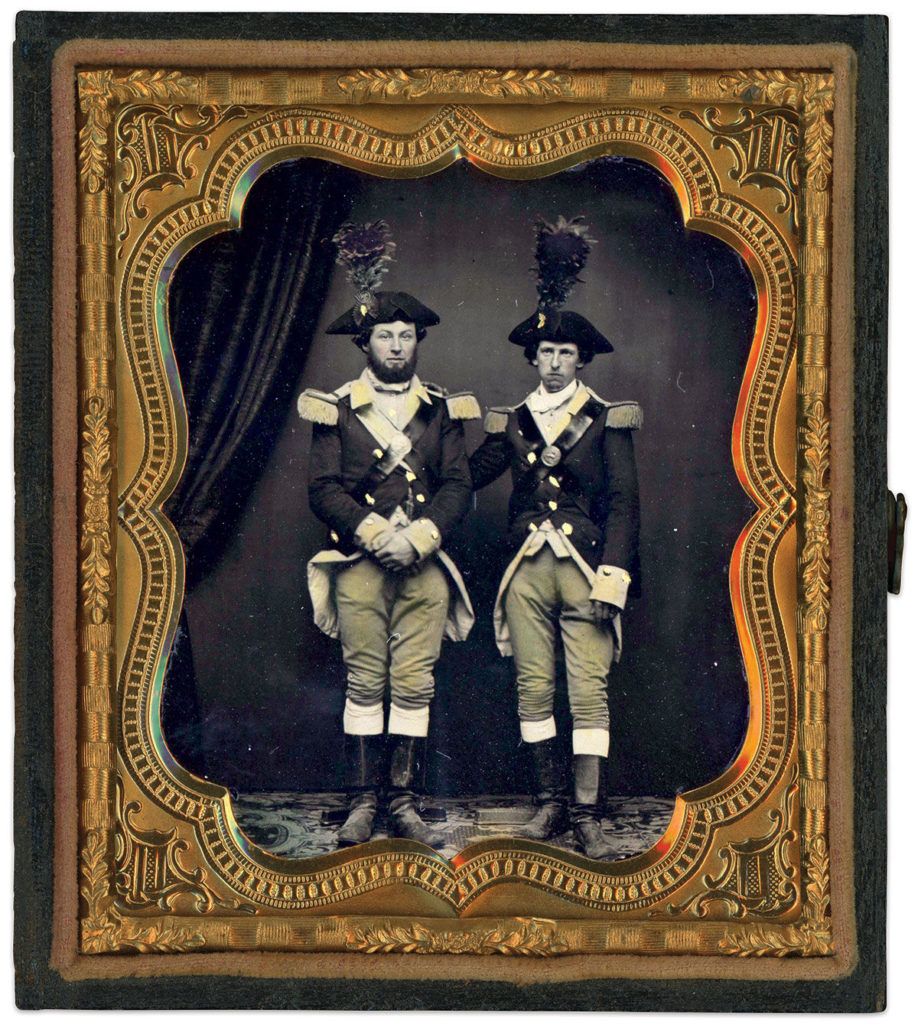
New York Continentals
Dan Binder Collection
Autumn 2020
Summary: In “Uniforms Inspired by the “Old Seventy-Sixers,” Senior Editor Ron Field examines the distinctive militia uniforms inspired by Gen. George Washington’s Continentals. See the full story.
Why I selected this photo: When Ron Field suggested documenting the Continental influence in Civil War images I jumped at the opportunity. I’m enamored of the idea of men of 1861 being inspired by Washington’s Army—and this image captures the essence of America’s connection to our first President and Commander-In-Chief.




























